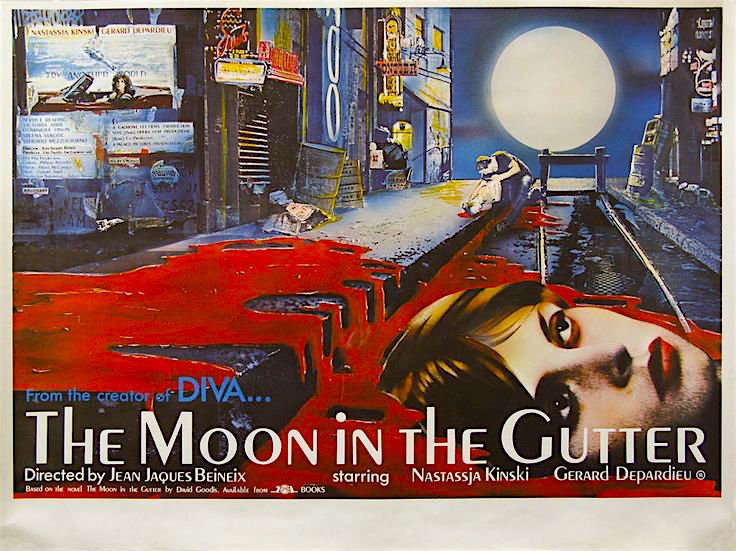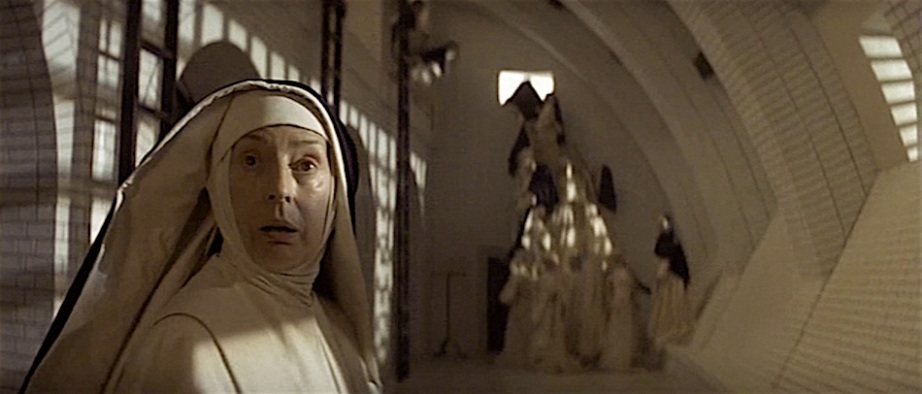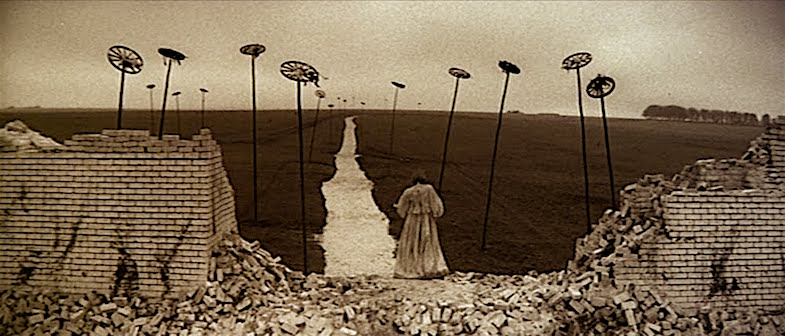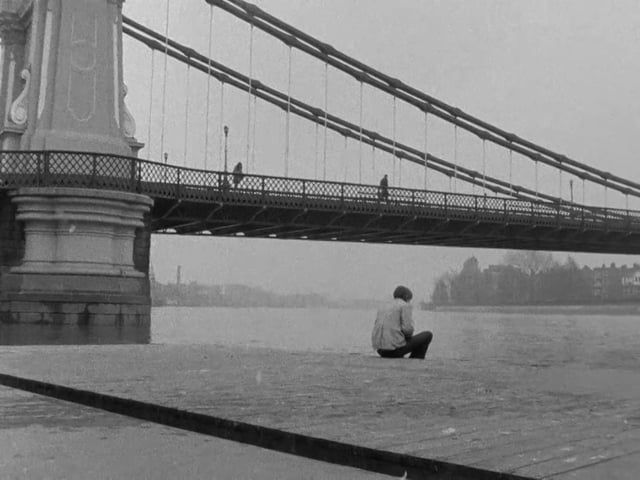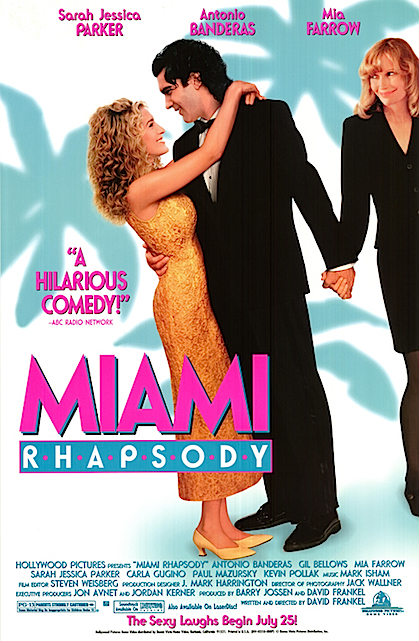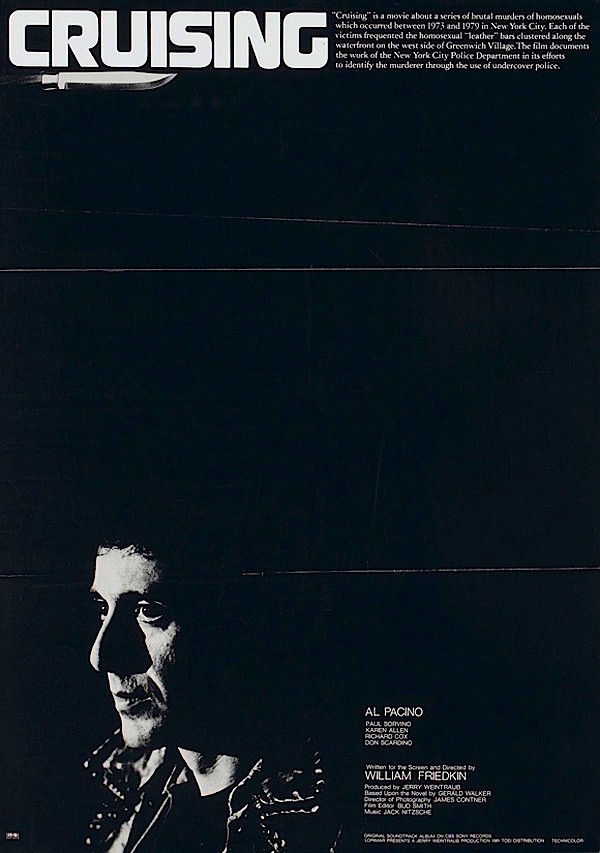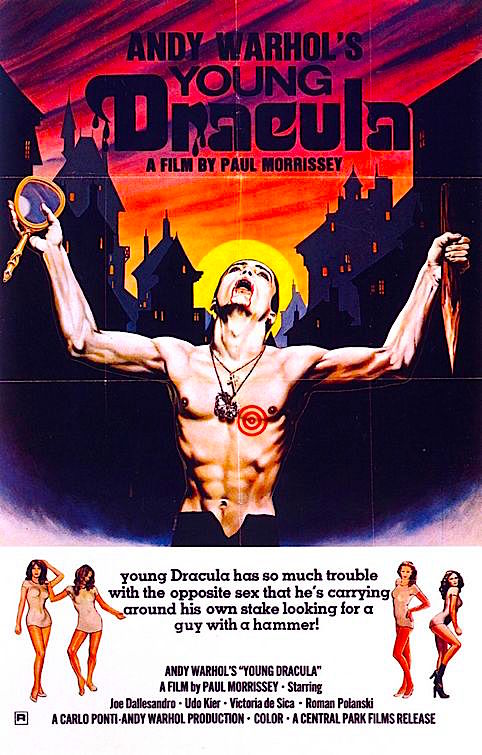In the final act of William Friedkin’s 1973 iconic film, The Exorcist, the film’s struggling priest and his wiser elder discuss the nature of evil, how to address it and how to understand it’s logic:
“Especially important is the warning to avoid conversations with the demon. We may ask what is relevant but anything beyond that is dangerous. He is a liar. The demon is a liar. He will lie to confuse us. But he will also mix lies with the truth to attack us. The attack is psychological, Damien, and powerful. So don’t listen to him. Remember that – do not listen.”

Why her? Why this little girl?
Max von Sydow
The Exorcist
William Friedkin, 1973
Cinematography | Owen Roizman
“Why her? Why this girl?”
“I think the point is to make us despair. To see ourselves as animal and ugly. To make us reject the possibility that God could love us.”
The Exorcist first arrived to cinemas in December of 1973. This film’s reception and the reactions it caused are of historical note. Financed and distributed by Warner Brothers the movie caused fear, panic attacks, a couple of heart attacks, repulsion, anger and accusations of “blasphemy.” While The Exorcist is essentially a Supernatural Horror Film, William Friedkin’s epic film was approached with a level of realism and artistry that could not be refuted. It was a highly artistically-valid film. As for being an exploitive use of a child actor and blasphemy, well The Vatican gave this film the seal of approval. It was even blessed for “realistically depicting demonic evil.” Cue priests, nuns, ministers and most God-fearing people line up and see it.

Marketing The Exorcist was challenging for Warner Brothers. It was clear to everyone that this was more than just a horror film. This early poster was rejected.
The Exorcist
William Friedkin, 1973
If one is able to take pause and look at Friedkin’s film independent of it’s source novel and The Vatican, this movie also offers an interesting spin on the state of American Culture at the beginning of the 1970’s.

Another “mock-up” idea for promoting that felt a little too After School Special for most at Warner Brothers.
The Exorcist
William Friedkin, 1973
It can easily be summed up as metaphor for the feeling that parents had lost control of their children amid the emergence of “Anti-Establishment Movement” to “Sexual Revolution” to “Drug Culture” to the ever-increasing power of Rock rebellion.

Eureka! And Warner Brothers creates an iconic marketing campaign by using an “altered” shot from the movie itself.
The Exorcist
William Friedkin, 1973
Cinematography | Owen Roizman
Both the novel and film also indirectly address the tragic side of becoming a priest. The film conveys that Jason Miller’s Priest is something more to his best priest buddy. While his friend seems to be able to repress his sexual desires, it appears to be bit more of a strain for Miller’s “Father Karras” a repressed and guilt-ridden former boxer who has escaped into the Priesthood as much to do good as to escape his all-too moral desires. Interestingly, the self-proclaimed Atheist mother find it easier to accept that her daughter might be possessed by The Devil than this conflicted priest. This film is also examining the impact of repression and the reasons men decide to become priests. Granted, it is in a somewhat passive way, but it is there.

“Stick your cock up her ass, you motherfucking worthless cocksucker.” Whether it by taunting into Father Karras’ most repressed fears of self-identity or by picking at his guilt for not having cared for his mother the way he feels he should have — this demon knows the priest better than he knows himself.
Subliminal Experimental Editing – so fast you can almost mess it.
The Exorcist
William Friedkin, 1973
Cinematography | Owen Roizman
No matter how you want to interpret or view The Exorcist – the power of this infamous film is beyond denial. I remember sitting in sold-out huge Boston cineplex auditorium in 2000 to see the “Restored” and the “Version I Had Never Seen.” I was actually curious to see how a modern day audience would react to this early 1970’s film. I think I was expecting that we would all find the movie darkly comic. I was wrong. This was the normal “cineplex” audience. You know, the one that freely converses, talks back to the screen and generally rude masses. True to form, as the commercials and previews screened children were screaming, teenagers were tossing candy at each other and all sorts of mayhem that will ruin a movie viewing experience for me. But as soon as The Exorcist started, the entire tone of the packed auditorium changed.

The Exorcist
William Friedkin, 1973
Cinematography | Owen Roizman
By the film’s midpoint you could have heard a pin drop. Almost 30 years later, this movie was freaking us out. And it still shocks.
Which brings us to one of those long pondered questions which forever escaped logic. How did WB’s The Exorcist secure an
“R-Rating” by the MPPA in 1973? How did it reclaim that same rating 30 years later? Other far less sadistic or graphic films had been slapped with an “X-rating” and by 2000 we had seen the arrival of the dreaded “NC-17” label. Why would the MPAA give an art film like “Henry & June” an “NC-17” and “The Exorcist” an “R-Rating?”

One of the tamer blasphemies of Holy Icons
The Exorcist
William Friedkin, 1971
Cinematography | Owen Roizman
Granted, neither or films for children, but if I were a parent and asked to pick which of these two films were “less appropriate” for a child under 17 years of age — I would select The Exorcist. I think most would.

A sweet little girl transformed into murderous and blasphemous monster.
Linda Blair watches her Exorcist die a painful death with a mix of interest and annoyance. She didn’t get his soul.
The Exorcist
William Friedkin, 1973
Cinematography | Owen Roizman
Or maybe not? I’m not a parent. Maybe I have it wrong.
To put The Exorcist‘s “R-Rating” in perspective, in the same year the MPAA rated The Exorcist as “R” it slapped the dreaded “X-Rating” to Nicolas Roeg’s Don’t Look Now. In comparison this rating makes no sense. Luckily, Nicolas Roeg’s film had Paramount behind it’s distribution. Somehow the MPAA rethought it and relented an “R-Rating” for Roeg’s experimental film. But only two years earlier the MPAA assigned Ken Russell’s The Devils with an “X-Rating.” And, this was after WB required Ken Russell to cut out a significant amount of footage. Warner Brothers held on to two copies of Ken Russell’s original theatrical cut. While Russell’s The Devils is a provocation, it never goes anywhere near the level of having a 14 year-old girl defile herself with a crucifix.

“Hell will hold no surprises for them!”
Warner Bros marketing campaign for
The Devils
Ken Russell, 1971
Interestingly much has been made about William Peter Blatty’s The Exorcist novel having been based on an actual and true incident involving a teenage boy in the 1950’s. However, when one actually looks into the “true story” much more of what actually happened is unclear. In most ways, this “true incident” appears to be largely lost within the shadows of marketing and urban legend. As grim and horrifying as The Exorcist is, both the 1973 and the 2000 versions offer the audience “hope.” This is a hope grounded in faith and the power of good over evil. There is nothing at all wrong with that. But it does seem a flimsy excuse to let it pass with an “R-Rating” when Friedkin’s more recent independent movie, Killer Joe, was given an “NC-17.”

Interesting to note that until the MPAA introduced the “NC-17-Rating” — The official “X-Rating” was actually less restrictive in number of states. It was left to individual states and cinemas to determine the age restricted. News to me.
In Kirby Dick’s 2006 documentary, This Film Is Not Rated, hidden cameras and a number of covert activities were utilized to break in to the odd world of Motion Picture Association of America’s rating system. The documentary revealed several things, but only one was surprising: Every screening held by the individuals who are “chosen” to serve as raters is blessed by both a Christian Minister and a Catholic Priest. While neither is supposed to lecture or push any decision of the raters, they are free to include whatever they wish in their blessings.
And here is the answer to the mysterious reasoning behind The Exorcist rating. It is Vatican approved.

Father Granier’s use of The Confessional is questionable to say the least.
Georgina Hale / Oliver Reed
The Devils
Ken Russell, 1971
Cinematography | David Watkin
It may contain graphic and obscene scenes of blasphemy, but it has a Catholic Intent. The priests fix it all! Or at least it seems to be thought.
The intent of Killer Joe is to satire the impact of greed on marginalized lower-class family dysfunction.
As for Ken Russell’s The Devils? The intent is aimed as satirizing both politics and religion. It depicts both fundamental aspects of most human life as opportunities for corruption, greed, ambition and power.

Graham Armitage as France’s King Louis XIII performs for Cardinal Richelieu, his assistant nuns and a slew of The French Royal Court’s most depraved. The Catholic Church doesn’t mind The King’s sins, they just want to share in the power and the wealth…
The Devils
Ken Russell, 1971
Cinematography | David Watkin
Oh, and unlike The Exorcist — The Devils is actually based on “historic fact.” I only put that in quotation marks because I am referring to 17th Century French history. However, the sources and descriptions of the events that Russell fictionalizes in The Devils tie much closer to what he shows us than anything of truth connected to The Exorcist. This means The Devils depicts a very scary moment in both French and Catholic history in which greed and power not only “suggested” nuns to blaspheme,

The Ursuline nuns are not there by choice, but because they form society’s rejects. Repressed and Caged. They do not require too much in the way of pressure from The Catholic Church to slip into hysteria that quickly morphs into Satanic blasphemy.
The Devils
Ken Russell, 1971
Cinematography | David Watkin
a primary Cardinal and his priests most likely “required” their nuns to comply or face torture — nothing is too much to a rebellious priest and assist the Catholic Church forge closer to a demented French King. Ken Russell didn’t even feel it necessary to change any of the actual names of the individuals who have already been forged into history.
This might explain Warner Brothers refusal to relinquish Ken Russell’s infamous and acclaimed 1971 art film, The Devils. Restoration of this film is of growing concern to Film Historians and Film Art Preservationists. Film only lasts so long and only WB knows where and how their 2 copies of The Devils are being stored. WB is not known to always apply a great deal of logic to their catalog. And they have an essential collection of cinematic work.

In many ways, Mother Superior, Sister Jeanne of the Angels, is the only “innocent” character in this film. She is ill and then sexually-assulted by Exorcists and Priests to extract false confession. From the very beginning we know she is hanging on to sanity by a string.
Vanessa Redgrave
The Devils
Ken Russell, 1971
Cinematography | David Watkin
Going into it’s 45th year, this film may soon be lost forever unless WB takes care of it or releases it to a company who will. As you read this you might feel the need to roll your eyes or dismiss it, but this is worse than censorship: it comes at the risk of losing a valuable piece of cinematic history.
While I’m not sure one could state that Ken Russell’s The Devils is a better film than Friedkin’s The Exorcist. William Friedkin made the better film. The Exorcist is a cinematic masterpiece. No questions asked.
Ken Russell’s cinematic work is challenging. An eccentric British filmmaker, he shares more in common with the films of Michael Powell or even more like those of Andrzej Zulawski. Russell’s films tend to have a manic pace and no restraint. They are often bombastic, loud, crass and dangerous to know. “Women in Love” and “Tommy” are probably his two most accessible films. But his work is often magical and intellectual. In the case of The Devils, it is angry. No question that Russell was a cinematic genius. But as is the case with many genius artists, he often had a hard time restraining himself from excess and obsession.
That being stated and noting that The Exorcist is the better film. I do think a case could be argued that The Devils is an equally important film. It is also worth noting that The Exorcist has been such an influential and cultural juggernaut of world-wide scope, multiple copies in all formats exist in a number of places. The future preservation of The Exorcist is secured.
However, as time and investigations move further along — it is becoming clear that there might only be two remaining prints of The Devils as it was originally to be released in 1971. For quite a while there was thought to be a secured copy held by Ken Russell’s daughter. It would appear that this is not the case. One other possibility for a print of the full film turned up as invalid. It would appear that Warner Brothers is the only one who has a pristine print of the original film.

Vanessa Redgrave as Sister Jeanne of the Angels swoons her way into a disturbing world of Christ Imagery erotic daydreaming…
The Devils
Ken Russell, 1971
Cinematography | David Watkin
Despite pleas from The British Film Institute, The Great Britain Historical Society, The Ken Russell’s Estate, The BBC, The Criterion Collection and a power-laden Official Petition — Warner Brothers simply refuses to relinquish the film to anyone for any reason. It was viewed as a major victory for BFI when WB finally agreed to supply them with with limited licensing rights and a copy to “restore” and transfer limited to British Region Code DVD/Blu-Ray (no cinema screenings allowed) It didn’t matter. At last an organization would be able to properly restore and save the film. It was a bit of shock for the distinguished BFI to discover that Warner would not “loan” or “share” an actual print of the film. Instead BFI received a Digi-Beta tape of the American X Certificate version. The American “X-Rated” version was even more cut up than the UK version. This Digi-Beta tape greatly limited the ability to “restore” quality and it was not the original theatrical release of the movie.

Oliver Reed as Father Urbain Grandier. While presented as a man of faith and ethics, he is also a cruel and callous man who is more than happy to seduce the females of his flock. The line between good and evil is a thin one for this “progressive” priest.
The Devils
Ken Russell, 1971
Cinematography | David Watkin
BFI did their best. The quality is better than the briefly and highly censored VHS tape WB released in the mid 1980’s. Some scenes are fuzzy, some aren’t, some have audio issues that could only be minimally-addressed. Worst of all, the most crucial scenes of Russell’s work are still missing.

Welcome to 17th Century France. Plague is in full force as Catholic and French Histories take a dark turn.
The Devils
Ken Russell, 1971
Cinematography | David Watkin
South Korea also secured a limited licensing from WB, but this was also made from a similar Digi-Beta tape that was an “R-rated” cut of the film that had never been seen. This version actually doesn’t completely make sense so much has been cut. There is one bootleg copy floating around, but the quality is so bad it is almost impossible to watch — and very often is impossible to hear.

Vanessa Redgrave’s Sister Jeanne is both amused and disgusted when faced with a woman who actually seeks to devote her life to Christ. After eloquently dismissing her devotional intention to be a waste as this f Ursuline nunnery is a safe home for the deformed and unmanageable. When she discovers Father Granier has already seduced the would-be-devout-nun her jealousy and rage holds back no punches:
“Whore! Strumpet! Hypocrite! You tell me you have no vocation? Of course you have a vocation! Fornicator! Fornicator! Sacrilegious bitch! Seducer of priest, that’s your calling! Your place is in a brothel. You filthy whore! Get back to the gutter where you belong!”
The Devils
Ken Russell, 1971
Cinematography | David Watkin
Warner Brothers has never actually officially addressed the reasoning behind their refusal to allow access to The Devils. Because they have stated that Ken Russell’s original cut of the film is within their possession and protection, many thought that the executives were holding off to “cash in” once the film’s notorious and infamous director had died. However, we lost Mr. Russell in late 2011 at the age of 84. Warner Brothers continues to refuse requests, petitions and any individual writer seeking information. The reasons for not letting the film out run deeper than any possible profit or historical cinema preservation merits.
It is particularly interesting in an age where any controversy is viewed “a selling factor” if it can make a buck. WB is a huge corporation. The bottomline and increasing profit is a main concern. So why keep The Devils hidden away? No one connected to the film’s controversy is left who would care.

“Satan is ever ready to seduce us with sensual delights.”
Vanessa Redgrave
The Devils
Ken Russell, 1971
Cinematography | David Watkin
The only living artist who could object would be Vanessa Redgrave. She, like many who worked for Ken Russell, remained a close friend until the end of his life. She has also expressed pride in having been a part of the film and considers it one of her best bits of work. Her role was originally intended for the equally esteemed Glenda Jackson. Jackson, also a life-long friend of Ken Russell and family, had discussed the fact that she turned down Redgrave’s infamous role because, at that time, she was tired of playing Russell’s sexually neurotic and hysterical muse. She made that statement both in truth and jest. Years later she would film her final role in Russell’s experimental and demented film Salome’s Last Dance. At the time Jackson noted that she had some regrets at having not played Sister Jeanne.
Acclaimed cinematographer, David Watkin, served as Cinematographer. He remained proud of this early film for offering him some freedom in establishing his own style while adhering to Russell’s vision. Prior to The Devils, Watkin was best known for having filmed 2 iconic movies: The Knack… and How to Get It and The Beatles’ Help.

A perverse fantasy of a sick woman will soon help pave the way toward public execution.
Oliver Reed / Vanessa Regrave
The Devils
Ken Russell, 1971
Cinematography | David Watkin
His style was really already formed, but he felt the freedom Russell allowed offered him great benefit. He died in 2008.
Another interesting aspect of The Devils is that it features the early work of the iconic Derek Jarman. Jarman’s imprint on The Devils is unforgettable. Serving as the film’s production designer, The Devils features some truly amazing sets. Jarman would go on to be an important and experimental voice in Film and the art of Queer Film.

One of many post-modern sets created by then Production Designer, Derek Jarman.
The Devils
Ken Russell, 1971
Cinematography | David Watkin
Jarman’s style was always unique, but it is clear that Russell’s aesthetic impacted his own vision.
Aside from the Film Theory aspect, The Devils is of note because it is a fictional account of something that is of historical note for both France and The Catholic Church. This is probably a page of history that both the country and The Vatican would rather forget. Interestingly, this might be the main reason WB is not letting the film go.
Aldous Huxley plunged deep within the history of what happened in 17th Century Loudun with the publication of his historical novel, Devils of Loudun. It was a controversial read then and it still is, but there is nothing in it than can be refuted. The few times Huxley actually is forced to put forward an explanation for things unexplained he offers several ideas to explain. And all are sound.

Let the “exorcisms” begin…
The Devils
Ken Russell, 1971
Cinematography | David Watkin
Huxley crafted a historical narrative to address the controversial, mysterious and sordid historical fact that involved Cardinal Richelieu, a rebellious priest by the name of Father Urban Grandier, An Ursuline Convent of nuns and their Mother Superior, Sister Jeanne of the Angels. It is know that Father Grandier disagreed with both the King and The Catholic Church at the time. It seems fairly obvious that he seemed to disagree with idea of celibacy and was corrupt in that he engaged in sexual trysts with women of his flock. It is also of note that Father Grandier was reported to be handsome, charismatic and flirtatious. For unknown reasons, he declined Sister Jeanne’s request to act as “Spiritual Advisor” for for both she and her nuns. Cardinal Richelieu already viewed Father Grandier as a threat to the church and The Church’s desire to become closely aligned with The King. King Louis XIII, the infamous monarch of the House of Bourbon is a figure of legendary in and of himself. And both of these powerful men needed the other for a while due to political and power circumstances.

All the nuns are gathered to stand in giant burrial holes and “suggested” to convulse, blaspheme, carnally degrade themselves for the “good” of God. Or faces the same torture imposed upon their Superior Mother. They are all eager to follow The Cardinal, The King and The Exorcists’ guidance for transgressive behavior.
The Devils
Ken Russell, 1971
Cinematography | David Watkin
In what could be compared to the Salem Witch Trails only far more perverse and blasphemous in nature, Huxley put forward a number of reasons that France, The Catholic Church and the People of Loudun thought Father Grandier had made a pact with Satan that allowed the pristine Ursuline nuns to be fully possessed by demonic forces. It is of historical record to the level of debauchery that these “possessions” led the “blessed” nuns and their “heavenly” Mother Superior to act out public acts of sexually perverse behaviors including orgies and evil sexual blasphemy with religious symbols and Christ Icons.

The King and his Royal Court make an appearance to giggle at the atrocious perversion of The Catholic Church.
The Devils
Ken Russell, 1971
Cinematography | David Watkin
Under both the blessing of the Cardinal and the approval of King Louis XIII, a series of public exorcisms were performed that involved more than just sprinkling of Holy Water. The nuns went further into “fits of hysteria” and their Mother Superior named Father Grandier as the evil responsible for their demonic actions. The public watched the acts of debauchery and exorcisms in what reads like some sick and twisted form of entertainment. The exorcisms went further into public acts of sexual torture. And then, it all stopped. The nuns and their Superior were free of their demons and redeemed in the “Eyes of God.”

A fellow priest begs Granier to confess and be spared. He refuses. The guilt-ridden priest seems to be praying more for himself than Granier.
Oliver Reed / Murray Melvin
The Devils
Ken Russell, 1971
Cinematography | David Watkin
Grandier was questioned and tortured by the exorcist, the priests and their followers to extract a confession of having formed a pact with The Devil and conspiring to corrupt all of France and the Catholic Church. He never confessed or gave in to the torture. Ultimately, he was burned at the stake.

Granier refuses to give-in to the political ploy of The Cardinal’s Exorcist.
Oliver Reed / Michael Gothard
The Devils
Ken Russell, 1971
Cinematography | David Watkins
This, according to history, was the only way both The King and The Cardinal could be sure that Loudun were rid of the Satanic Grip. The public execution was treated as entertainment. Everyone in the town celebrated and the nuns were also granted approval to witness the horrid death.

Father Granier’s abandoned son is brought to watch his father’s execution.
Georgina Hale
The Devils
Ken Russell, 1971
Cinematography | David Watkin
Huxley theorized a number of ideas. One of the most controversial being that most women who became nuns at this time had been deemed “unmanageable” and desperate for shelter. Though not completely clear, it would appear that The Mother Superior suffered some major physical birth defect. Her holiness was viewed to be a result of her plight. It is historically stated that Father Grandier enjoyed antagonizing Sister Jeanne of the Angels.
Huxley writes that the levels of sexual repressions, lack of serious faith, The Mother Superior’s disdain for the priest, the fact that many of the men in Loudun viewed Grandier as a trouble-maker with both The King and The Cardinal — and ultimately the political possibilities between a power-hungry Cardinal and a possible insane and perverse King led to one of the ugliest moments in French and Catholic history.
Huxley goes into great detail about the many realistic and human possibilities that factored into this incident. He leans toward the political, hypocracy and a shared temporary delirium or hysteria for the nuns. He also suggests that it many not have been so psychological. It might have boiled down to the nuns having to do as instructed by their Cardinal. Anyway one looks at it, it is not a pretty picture of religion or politics.

The Devils
Ken Russell, 1971
Cinematography | David Watkin
Filmed at the very end of the 1960’s, the political and liberal Ken Russell saw this story and the play it had inspired to be an ideal topic to explore as metaphor. Russell’s The Devils is excessive in every way possible. While often beautifully staged and crafted — the film pulses with a hysterical pace. The acting is intentionally “theatrical” and most certainly presented to shock. The political ideologies spell forth throughout. Russell does not spare Oliver Reed’s Father Grandier as solidly ethical character. He is impossible to like, but it is equally impossible that this character deserves what he is given. Especially since he is given it for entirely the wrong reasons.
Vanessa Redgrave fares best in the film. In fact she is fantastic in the role. She is able to match the operatic pacing of the film with a carefully eccentric and darkly comical read on her character. It is an impossibly brilliant performance. Russell presents both she and her nuns as women who have “devoted” their lives to God because society has no other use for them. The only character who appears to actually feel a true calling to the devoted life of a nun is quickly dismissed by Redgrave’s Sister Jeanne of the Angels. She is too pretty to waster her time locked up in the convent. And what a convent it is. While Redgrave’s character runs a strict order, she simply turns the other way as her nuns grab at vague attempts as sexual gratification.

Sympathy for the Devil?
Oliver Reed
The Devils
Ken Russell, 1971
Cinematography | David Watkin
When the nuns become a pawn of The Church and The State, it is as if they’ve been not only granted “permission” to explore their repressed desires, the threat of torture looms if they don’t take those “desires” to blasphemous limits. This is the portion of the film that remains controversial almost 45 years later. The scenes are disgusting. They are not erotic. They are upsetting. What’s more — these scenes which have been labeled The Rape of Christ — can be found from time to time on YouTube. BFI has access to an inferior copy from whereabouts unknown. They were shown on British television documentary about the film in the late 80’s. Compared to much of what we see now on cable, they are really barely eligible for an R rating much less an X or NC-17.

Faith and Religion Distorted
For Ambition, Greed, Power and Control…
The Devils
Ken Russell, 1971
Cinematography | David Watkin
The scenes that are the most disturbing are in the R-rated cut. Sister Jeannes’ “exorcism” is actually rape and sexual torture. 40 some odd years later, these scenes are still hard to watch. Yet these scenes get an “R-Rating” when an “NC-17” would be more appropriate. Another controversial segment which would probably secure a “PG-13” rating today is actually one of the more blasphemous scenes in the movie. Sister Jeannes convulsive sexual fantasies of Father Granier as Christ are not graphic, but oddly disturbing. Filmed beautifully and erotically, Oliver Reed emerges as Christ descended from the Cruxifiction walking upon water to Sister Jeanne. As she kisses his bloodied feet and sweeps her hair over them. She begins to move up his body as if about to engage in felatio when the wind blows her vaguely nun-like wrapping off — her hump back is revealed and she screams in horror as everyone begins to mock and degrade her.

Georgina Hale
The Devils
Ken Russell, 1971
Cinematography | David Watkin
The Devils may not have been crafted with the precise and deftly serious style as The Exorcist, but Ken Russell’s film is concerned with far more serious cultural issues than Evil vs. Good. In The Devils, Ken Russell is presenting ideas that still seem to shake people to their core. It is a satirical political commentary that works incredibly well. Fever-pitched and unapologetic it is an essential film.
And when one stands back from both of these films, The Exorcist is actually the more perverse and controversial film. Welcome to the schisms of Film Theory, History, Politics and Religion.

The tragically deformed Mother Superior fosters an unhealthy desire of Christ as a source of eroticism. And her priest, Father Granier, has taken the place of Christ in her mind. Enter Erotic Surrealism…
Vanessa Redgrave
The Devils
Ken Russell, 1971
Cinematography | David Watkin
I have written about both Ken Russell, his work and this film in particular a number of times. I’ve also done some “covert investigation” in separating fact from fiction regarding Warner Brothers and possible prints of the original cut. If anyone is persistent, it a fan of film. There are a great number of Film Preservationists, Film Historians, devoted Ken Russell fans and Cinematic Curiosity Seekers who are still pushing to gain access to this film. Unless Warner Brothers is lying to us and they lost both of those prints, there is always a chance that Ken Russell’s The Devils might one day gets its moment in on the screen.
Matty Stanfield, 8.10.2015








